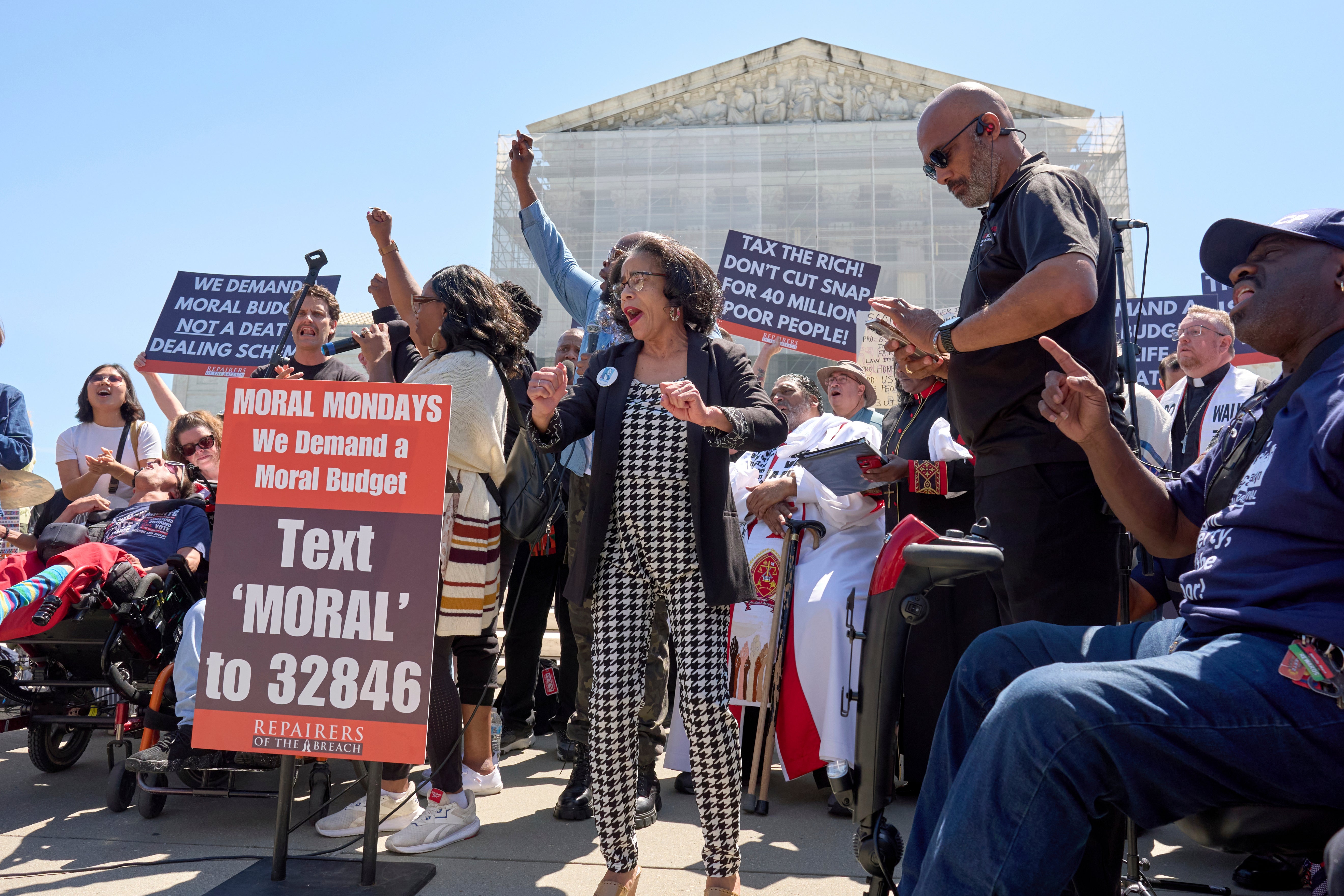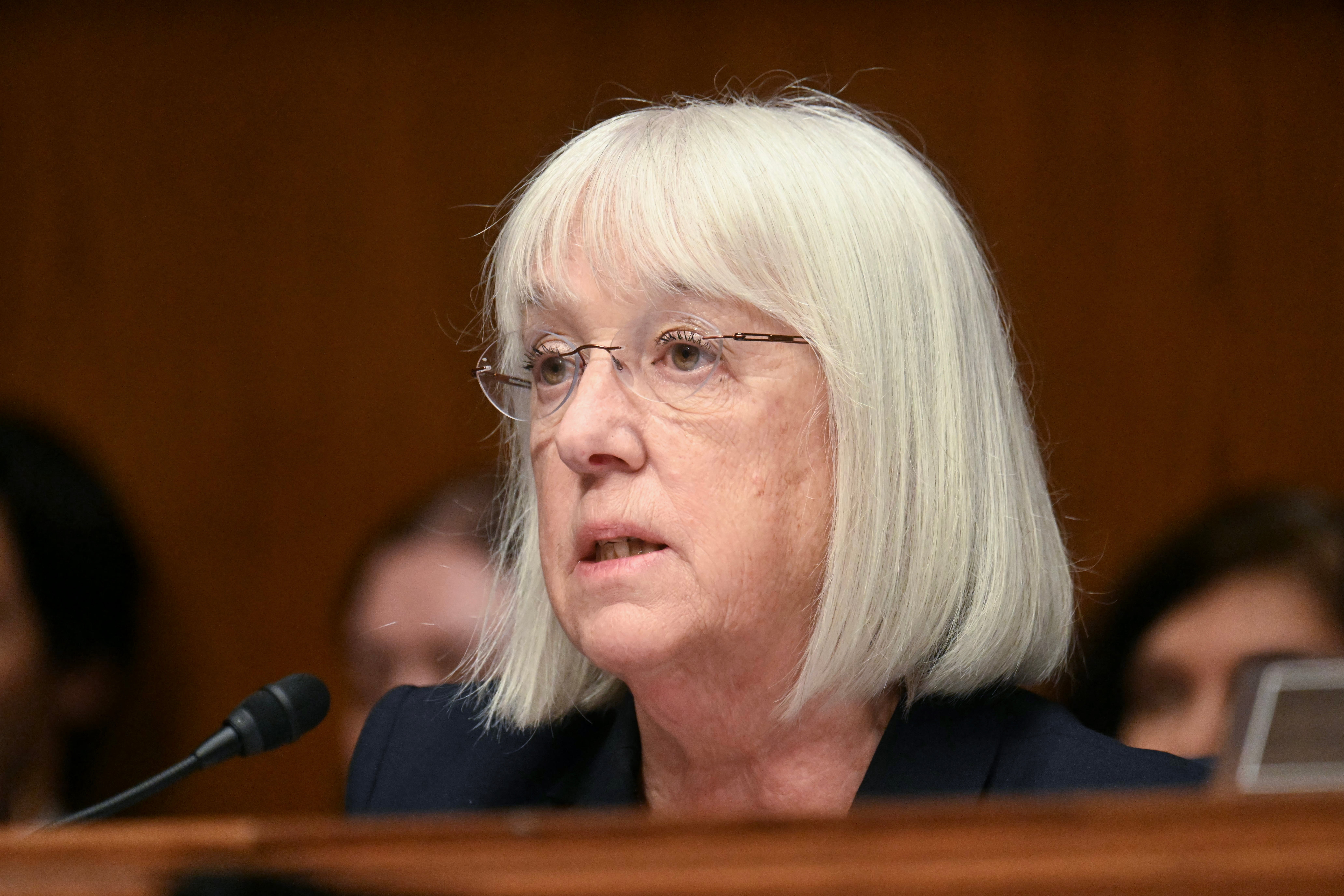Donald Trump’s plan to slash billions of dollars in federal spending includes dramatic cuts to vital programs that support millions of Americans, including the nation’s poorest families.
New details in a massive White House document spanning more than 1,200 pages outline stark cuts to programs that help feed and house millions of children, which critics fear will have dangerous consequences for the nation’s most vulnerable households.
Trump’s 2026 budget proposal was released with little fanfare on Friday evening as Congress prepares to vote on more than a dozen spending measures. It will ultimately be up to lawmakers to decide how far those cuts stretch.
But the president wants to shed $163 billion in non-defense spending from the nation’s 2026 budget.
That includes cutting down $12 billion from education programs and more than $60 billion from agencies supporting housing and food access for women and children — from slashing rental assistance for poor families to ending the only federal program that supports state-level preschool development.
The White House proposes significantly rolling back support for the Special Supplemental Nutrition Program for Women, Infants and Children (WIC), which supports more than 6.7 million people, including 1.5 million pregnant and post-partum mothers and more than 5 million children under age 5.
Under Trump’s proposal, breastfeeding mothers receiving WIC assistance would see their monthly benefits plummet from $54 to just $13, while support for children would drop from $27 to $10, according to the National WIC Association.
Current WIC benefit levels only cover the cost for about half the recommended daily serving of fruits and vegetables for young children and mothers, according to the group. Trump’s proposed cuts would give children only 19 percent and mothers just 12 percent of those recommendations, the group found.
“This budget request falls short of the Trump administration’s commitment to ‘Make America Healthy Again,’ particularly in its failure to support maternal and child health through vital nutrition programs,” according to National WIC Association president Georgia Machell.
Trump’s proposal “directly removes healthy food from the hands of low-income moms and young children who face nutritional risk,” she added. “This budget doesn't just break promises. It takes healthy food off of children's plates.”
The proposal would also eliminate funding for Child Nutrition Trainings, Farm to School Grants, and School Meal Equipment Grants, “which will hurt schools' ability to feed children nutritious food during the school day,” according to Democrats on the Senate Appropriations committee.

Trump’s budget document zeroes out programs across education.
Entire pages across the 1,200-page document would eliminate programs supporting preschools, before- and after-school programs, literacy programs and education for homeless children and in rural areas.
The proposal would reduce the annual budget for the Department of Education — which the president wants to abolish altogether — by $12 billion, from $79.6 billion to $66.7 billion.
“The budget underscores that President Trump’s vision for returning education to the states means state and local taxpayers will pay more to support students and educators at their local schools thanks to major cuts in federal funding,” according to Democrats on the Senate Appropriations Committee.
Under the White House proposal, more than a dozen existing grants supporting education programs would be condensed into one fund that would let states choose how to spend those dollars.
That would mean ending dedicated funding streams to support after-school programs and other services — such as programs that specifically support tens of thousands of homeless children. Roughly 1.4 million children in kindergarten through 12 grade experienced homelessness during the 2022-2023 school year, according to the latest federal data.

Trump also proposes slashing funds for the Department of Housing and Urban Development by more than 43 percent.
More than 10 million Americans rely on federal rental assistance, including 5.6 million people in families with children. Drastic cuts to those lifelines could put more families at risk of eviction and homelessness, according to the Center on Budget and Policy Priorities.
Housing Choice Vouchers and Section 8 assistance would lose more than $26.7 billion, marking a 42 percent reduction, under Trump’s proposal.
“We should be making housing affordable by expanding effective rental assistance to help everyone in need, not slashing it irresponsibly to pay for tax cuts skewed to the wealthy,” said Will P. Fischer, the center’s director of housing policy.
A cap on how long households with “able-bodied adults” can continue receiving federal assistance could put thousands of families at risk of losing their homes.
In New York City, more than 61 percent of residents receiving assistance — roughly 316,00 people — could be deemed ineligible under Trump’s vague definition, according to an analysis of New York City Housing Authority data.
“This is a draconian proposal to hurt working people and our economy, and it is dead on arrival in Congress as long as I have anything to say about it,” said Washington Sen. Patty Murray, the top Democrat on the Senate Appropriations committee.
“But this is just another reminder we need Republicans to join us to reject these reckless cuts, focus on the investments we actually need to make in our communities and security, and to finally force Trump to follow the law and end his devastating funding freeze,” she added.
Trump conducts the weirdest exit interview in history as Musk departs the White House — for now
Elon Musk leaves a mess for Trump and Mike Johnson with DOGE exit
Mike Johnson wins his toughest battle yet – and shows he’s here to stay
Trump’s trade policy is making China great again - at the US’s expense: analysis
To prevent blackouts, Trump administration keeps an aging power plant online through summer
More white South Africans arrive in the US under a new refugee program







